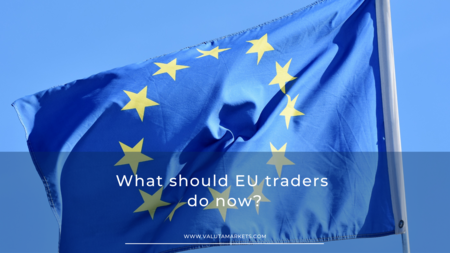The pandemic had an on-and-off effect on economies across the globe. Europe was among the most affected continents, with an endless cycle of emergence and resurgence of the pandemic. This affected the EU markets, creating uncertainties and significant shifts in the market.
Towards the end of 2021, a pandemic resurgence was witnessed worldwide, with market participants responding to the shifts to revisit their market expectations and, of course, growth. After a substantial recovery period, the recovery rate has slowed down, but risks still linger.
The market is still characterized by high risk and volatility, contagion, high credit, and even operational risks as new events and challenges emerge. In 2022, EU traders continue to witness risks. Market correction and improvements in the economic environment will be effective if accompanied by resilience. The markets also need to devise ways to tackle the geopolitical tension building up in Eastern Europe.
A risk assessment of the EU market environment will inform the next steps for EU traders.
1. Market Environment
Macroeconomic conditions in the Euro market have continued to improve amid the start and stop environment created by the pandemic. While that is the case, the economic outlook is still unclear as stability is yet to be achieved.
Inflation has remained to be a concern in the market. There has been an increase in consumer prices, creating uncertainties on where the market expectations lie in terms of monetary policy. More so, the ongoing geopolitical tension continues to drive unpredictability.
Apart from a steep increase in consumer prices, there is the risk of volatility in the energy and commodities sector. So what should EU traders do in this instance? There are several approaches they can take to avoid risk and also use volatility to their advantage.
The traders can choose to avoid the volatility by staying invested and not trading. If they decide to trade, they should consider working with a limit order. This would also be a good time to diversify portfolios to distribute the risk. Dollar-cost averaging is also a sound strategy that will keep the traders active in the market and protect them from risk and volatility.
2. Elevated Prices in The Securities Markets
There has been an increase in the prices of equity globally. As much as containment of volatility was somewhat successful, the price-earnings ratios remained high. The chances of market correction taking place are still low. Should traders buy securities now?
Due to the current volatility, now may not be the best time for traders to time the market. Instead, they should lean more towards the “time in the market” approach. Long-term investment in securities would make more sense, giving traders more time to recover. The current market fluctuations and short-term drops will not be their concern.
3. Consumers, Retail Investors, and The Stock Market
The financial position of consumers in Europe continues to gain a good standing. This has been chiefly motivated by the high investor confidence and strong investment performance. The net retail investment has maintained a strong position.
This has seen a surge in the number of retail investors and, of course, retail investor activity. The increase in retail activity has had an impact on risk management. This results in risk and volatility emanating from panic selling and reaction, causing a shift in direction in the market. Retail investors can increase volatility in the market.
The increase in retail investor activity in the EU market has seen increased consumer complaints. Traders in the EU can also take advantage of the increase in retail investor activity for their benefit. One of the impacts of retail investors in the stock market is increased liquidity.
Worth noting, however, is that the liquidity is often short-lived and the effects reverse and weaken after a while. High liquidity periods allow traders to open and close positions in the stock market quickly. Bid-offer spread tightens. Traders also need to be aware of the liquidity risk and manage it using strategies such as employing guaranteed stops.
4. Increase in Market-Based Finance
The European capital market has continued to anchor corporate financing. Market financing continues to experience growth thanks to the favorable market conditions created by an accommodative monetary policy.
The increase in reliance on market-based financing has left the financial system susceptible to the risk of a decline in the value of the financial market. It has also left the financial system exposed to shocks in the secondary markets, which can potentially impact the safety and security of transactions.
The increase in market-based financing has seen a boom in IPOs, high corporate bond issuance, and increased SMEs’ access to finance. This has increased risk in the IPOs market due to investor selectivity and market overvaluation. The growth of bond issuance also has increased uncertainties in future market developments.
On the other hand, the increase in SMEs’ access to finance has seen a decline in SMEs’ use of market-based instruments. The ripple effect has been an increase in business confidence and a consequent increase in confidence in stocks. This has led to more buying opportunities, creating a potential for an upward trend in stock prices.
Looking at the stock market from this angle, it may be an excellent time to buy equity in companies. Traders should consider looking around for companies for equity issuance and make plans for long-term investment.
Conclusion
The Euro market is still characterized by volatility emanating from the start and stop Covid-19 environment and geopolitical tension. There is a need for traders to evaluate the risks and opportunities available in the market, create risk mitigation plans, or make moves to benefit their trade.
The exciting thing about the markets is that even amid high risk and volatility conditions, traders can still make moves that can favor them. It is a good time to buy equities, get financing for your business, avoid trading, and focus on a long-term strategy. Again, all this depends on your trading strategy; evaluate your options and make the fittest moves.


